Protocols, DeYtH Banger, Clive Cooper [macos ebook reader txt] 📗
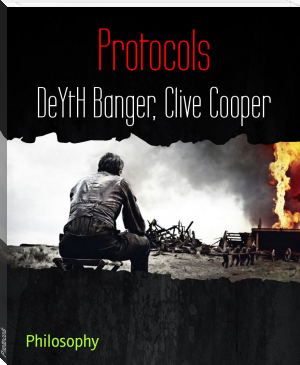
- Author: DeYtH Banger, Clive Cooper
Book online «Protocols, DeYtH Banger, Clive Cooper [macos ebook reader txt] 📗». Author DeYtH Banger, Clive Cooper
Fischer is a part of the Expedition 51/52 crew that launched to the International Space Station in April.
The session is sponsored by the MIT Department of Aeronautics and Astronautics. MIT alumni have been represented in the astronaut ranks since the earliest days of the space program. Four of the astronauts who walked on the moon held degrees from MIT. The video call offers a real-time opportunity for aspiring young aerospace engineers to pose questions about living, working and researching in space to an alumnus who is doing just that.
Linking students directly to astronauts aboard the space station provides unique, authentic experiences designed to enhance student learning, performance and interest in science, technology, engineering and mathematics (STEM). This in-flight education downlink is an integral component of NASA Education’s STEM on Station activity, which provides a variety of space station-related resources and opportunities to students and educators.
For NASA TV streaming video, schedule and downlink information, visit:
http://www.nasa.gov/nasatv
For more information, videos and lesson plans highlighting research on the International Space Station, visit:
http://www.nasa.gov/stemonstation
-end-
Space Weather Model Simulates Solar Storms From Nowhere
Our ever-changing sun continuously shoots solar material into space. The grandest such events are massive clouds that erupt from the sun, called coronal mass ejections, or CMEs. These solar storms often come first with some kind of warning — the bright flash of a flare, a burst of heat or a flurry of solar energetic particles. But another kind of storm has puzzled scientists for its lack of typical warning signs: They seem to come from nowhere, and scientists call them stealth CMEs.
Now, an international team of scientists, led by the Space Sciences Laboratory at University of California, Berkeley, and funded in part by NASA, has developed a model that simulates the evolution of these stealthy solar storms. The scientists relied upon NASA missions STEREO and SOHO for this work, fine-tuning their model until the simulations matched the space-based observations. Their work shows how a slow, quiet process can unexpectedly create a twisted mass of magnetic fields on the sun, which then pinches off and speeds out into space — all without any advance warning.
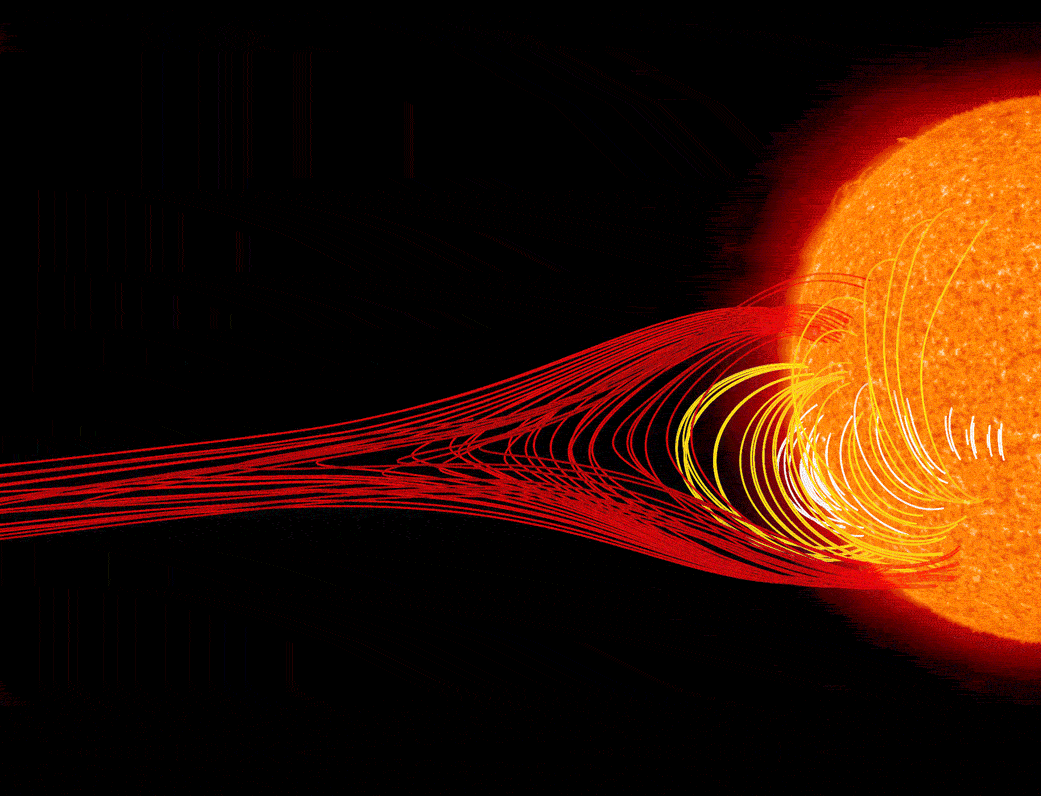
Watch the evolution of a stealth CME in this simulation. Differential rotation creates a twisted mass of magnetic fields on the sun, which then pinches off and speeds out into space. The image of the sun is from NASA’s STEREO. Colored lines depict magnetic field lines, and the different colors indicate in which layers of the sun’s atmosphere they originate. The white lines become stressed and form a coil, eventually erupting from the sun.Credits: NASA’s Goddard Space Flight Center/ARMS/Joy Ng, producer
Compared to typical CMEs, which erupt from the sun as fast as 1800 miles per second, stealth CMEs move at a rambling gait — between 250 to 435 miles per second. That’s roughly the speed of the more common solar wind, the constant stream of charged particles that flows from the sun. At that speed, stealth CMEs aren’t typically powerful enough to drive major space weather events, but because of their internal magnetic structure they can still cause minor to moderate disturbances to Earth’s magnetic field.
To uncover the origins of stealth CMEs, the scientists developed a model of the sun’s magnetic fields, simulating their strength and movement in the sun’s atmosphere. Central to the model was the sun’s differential rotation, meaning different points on the sun rotate at different speeds. Unlike Earth, which rotates as a solid body, the sun rotates faster at the equator than it does at its poles.
The model showed differential rotation causes the sun’s magnetic fields to stretch and spread at different rates. The scientists demonstrated this constant process generates enough energy to form stealth CMEs over the course of roughly two weeks. The sun’s rotation increasingly stresses magnetic field lines over time, eventually warping them into a strained coil of energy. When enough tension builds, the coil expands and pinches off into a massive bubble of twisted magnetic fields — and without warning — the stealth CME quietly leaves the sun.
Such computer models can help researchers better understand how the sun affects near-Earth space, and potentially improve our ability to predict space weather, as is done for the nation by the U.S. National Oceanic and Atmospheric Administration. A paper published in the Journal of Geophysical Research on Nov. 5, 2016, summarizes this work.
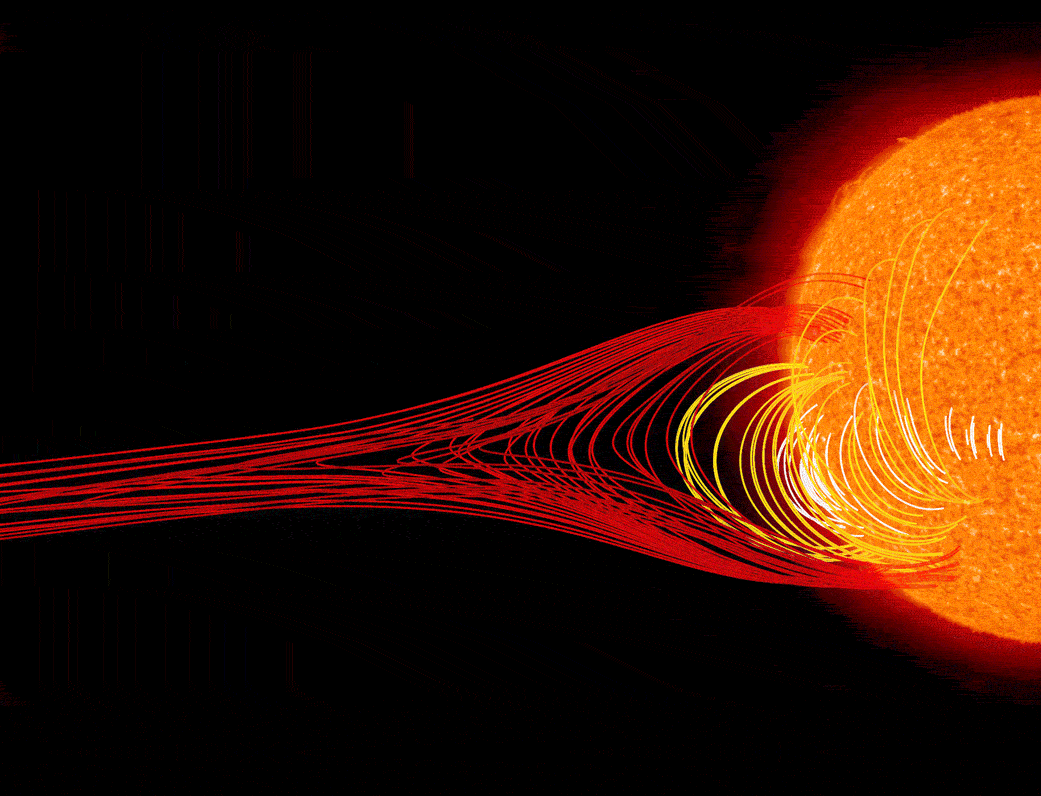
(Highlights: Week of May 1, 2017) - Bone loss in space and on Earth is the focus of a month-long investigation that began this week on the International Space Station.
Millions of Americans experience bone loss -- from disease, aging or as a result of being bed-ridden. Reducing the gravitational load on skeletal tissue can accelerate bone loss and the possibility of fractures. The condition is also found in astronauts returning from long voyages in space. New ground-based studies are using magnetic levitation equipment to simulate these gravity-related changes on bone cells. NASA astronaut Peggy Whitson and ESA (European Space Agency) astronaut Thomas Pesquet set up the Gravitational Regulation of Osteoblast Genomics and Metabolism (OsteoOmics) investigation to test whether magnetic levitation accurately simulates the conditions of microgravity found in space by comparing different types of bone cells from both environments.
This information could help scientists determine the molecular and genetic changes that take place in either scenario. If it is determined that magnetic levitation is a reasonable simulation for microgravity, future ground studies may assist in finding new ways to treat bone loss during space missions while also providing treatments for people suffering bone loss on Earth.
NASA astronaut Jack Fischer continued more research into bone health, completing a set of ultrasounds for the Integrated Resistance and Aerobic Training Study (Sprint). This NASA Human Research Program study evaluates the use of high-intensity, low-volume exercise training to maintain the health of crew members -- minimizing muscle and bone loss and maintaining cardiovascular function during long-duration missions.
Ultrasound scans are used to evaluate spaceflight-induced changes in the muscle volume. When the study is complete, investigators expect to provide an integrated resistance and aerobic exercise training protocol capable of maintaining muscle, bone and cardiovascular health while reducing total exercise time over the course of a long-duration spaceflight. This will provide valuable information in support of the long-term goal of protecting human fitness for even longer space exploration missions. Data gathered from the investigation also may help scientists develop treatments to aid in muscle, bone and heart health on Earth.
Space station crew members installed a new investigation to research technologies for future space exploration missions. The Passive Thermal Flight Experiment tests thermal management technology to improve the design and performance of a reliable heat transfer system while also reducing the mass and power required to run such a system.
Future human exploration activities will require thermal management systems for the comfort of space travelers as well as the requirements needed by various science investigations. This technology, while intended for use on future spacecraft, would also apply to a variety of needs to transfer heat or cooling on Earth.
Progress was made on other investigations, outreach activities, and facilities this week, including Fluid Dynamics in Space (FLUIDICS), Genes in Space-2 and Strata-1.
Scientists watch fat metabolism in live fish, observe real-time lipid biochemistry May 8, 2017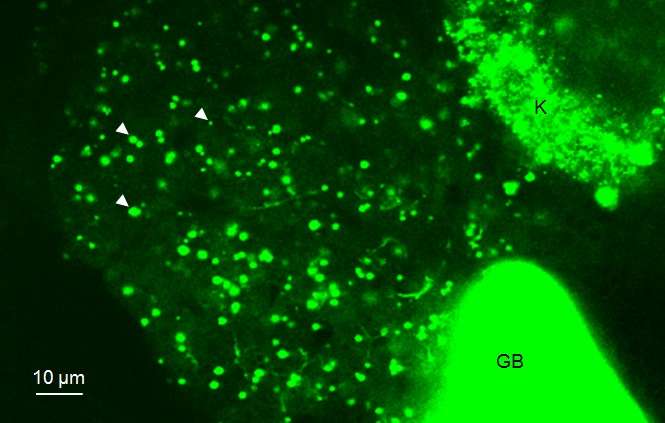
A live image of the liver of a translucent, larval zebrafish. It was taken using confocal microscopy, which allows for clear images of the internal organs of a whole live animal. Quinlivan fed a fluorescently tagged fatty acid to a larval zebrafish and then photographed its liver at 400x magnification. The round dots of varying sizes are lipid droplets, which contain a kind of fat called triglyceride. These triglycerides were constructed using the fluorescent fat consumed by the larval zebrafish. Fluorescence also shows up in the gallbladder (GB) and developing kidney (K). Credit: Vanessa Quinlivan
Studying how our bodies metabolize lipids such as fatty acids, triglycerides, and cholesterol can teach us about cardiovascular disease, diabetes, and other health problems, as well as reveal basic cellular functions. But the process of studying what happens to lipids after being consumed has been both technologically difficult and expensive to accomplish until now.
New work from Carnegie's Steven Farber and his graduate student Vanessa Quinlivan debuts a method using fluorescent tagging to visualize and help measure lipids in real time as they are metabolized by living fish. Their work is published by the Journal of Lipid Research.
"Lipids play a vital role in cellular function, because they form the membranes that surround each cell and many of the structures inside of it," Quinlivan said. "They are also part of the crucial makeup of hormones such as estrogen and testosterone, which transmit messages between cells."
Unlike proteins, the recipes for different lipid-containing molecules are not precisely encoded by DNA sequences. A cell may receive a genetic signal to build a lipid for a certain cellular purpose, but the exact type may not be indicated with a high degree of specificity.
Instead, lipid molecules are built from an array of building blocks whose combinations can change depending on the type of food we eat. However, lipid compositions vary between cells and cellular structures within the same organism, so diet isn't the only factor determining which lipids are manufactured.
"Understanding the balancing act in what makes up our bodies' lipids—between availability based on what we're eating and genetic guidance—is very important to cell biologists," Farber explained. "There is growing evidence
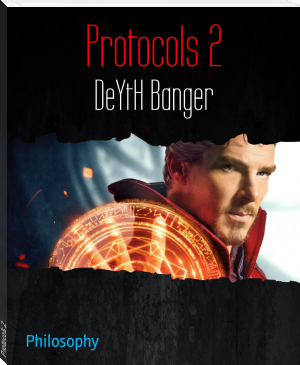




Comments (0)